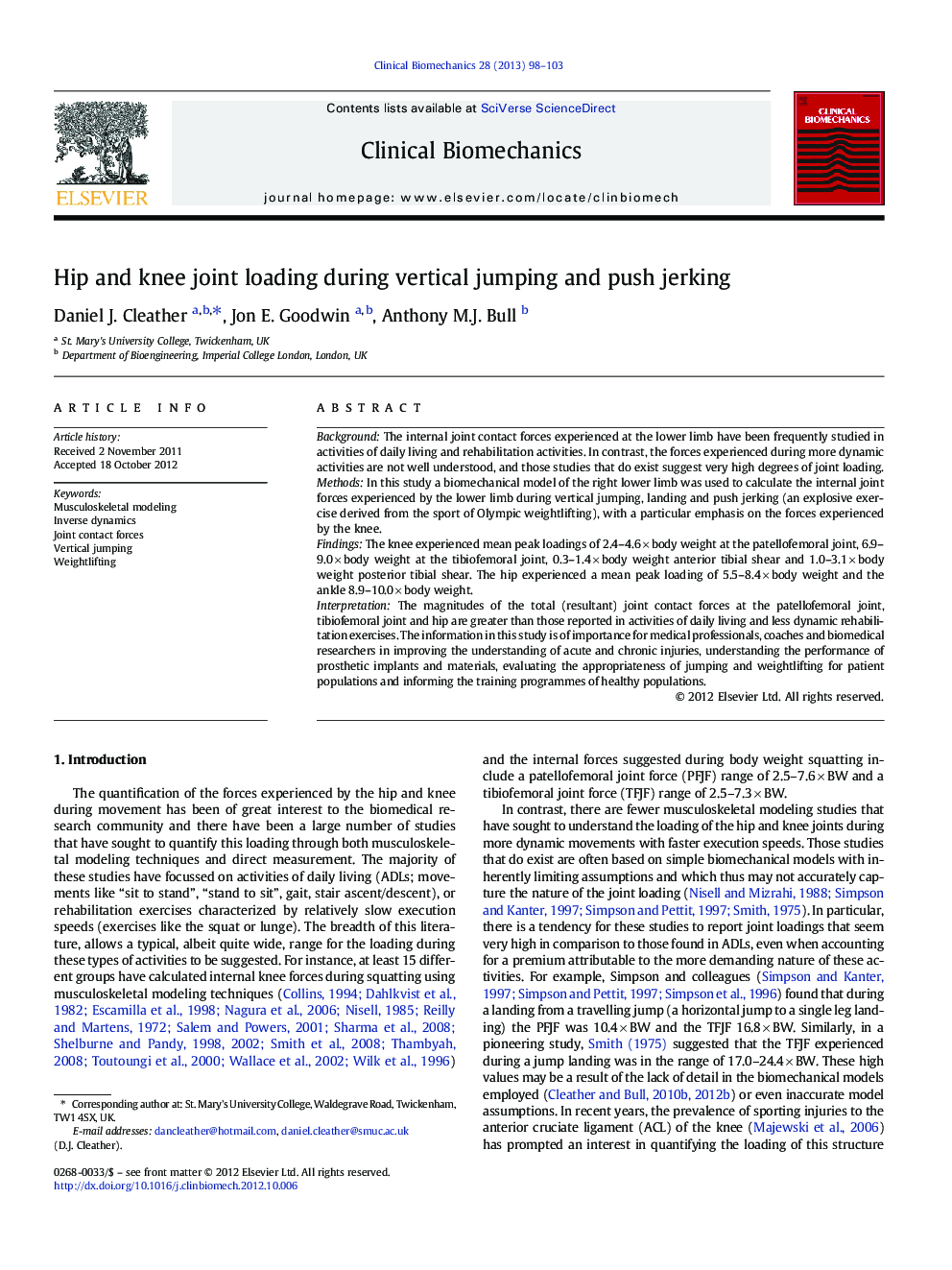| Article ID | Journal | Published Year | Pages | File Type |
|---|---|---|---|---|
| 4050399 | Clinical Biomechanics | 2013 | 6 Pages |
BackgroundThe internal joint contact forces experienced at the lower limb have been frequently studied in activities of daily living and rehabilitation activities. In contrast, the forces experienced during more dynamic activities are not well understood, and those studies that do exist suggest very high degrees of joint loading.MethodsIn this study a biomechanical model of the right lower limb was used to calculate the internal joint forces experienced by the lower limb during vertical jumping, landing and push jerking (an explosive exercise derived from the sport of Olympic weightlifting), with a particular emphasis on the forces experienced by the knee.FindingsThe knee experienced mean peak loadings of 2.4–4.6 × body weight at the patellofemoral joint, 6.9–9.0 × body weight at the tibiofemoral joint, 0.3–1.4 × body weight anterior tibial shear and 1.0–3.1 × body weight posterior tibial shear. The hip experienced a mean peak loading of 5.5–8.4 × body weight and the ankle 8.9–10.0 × body weight.InterpretationThe magnitudes of the total (resultant) joint contact forces at the patellofemoral joint, tibiofemoral joint and hip are greater than those reported in activities of daily living and less dynamic rehabilitation exercises. The information in this study is of importance for medical professionals, coaches and biomedical researchers in improving the understanding of acute and chronic injuries, understanding the performance of prosthetic implants and materials, evaluating the appropriateness of jumping and weightlifting for patient populations and informing the training programmes of healthy populations.
